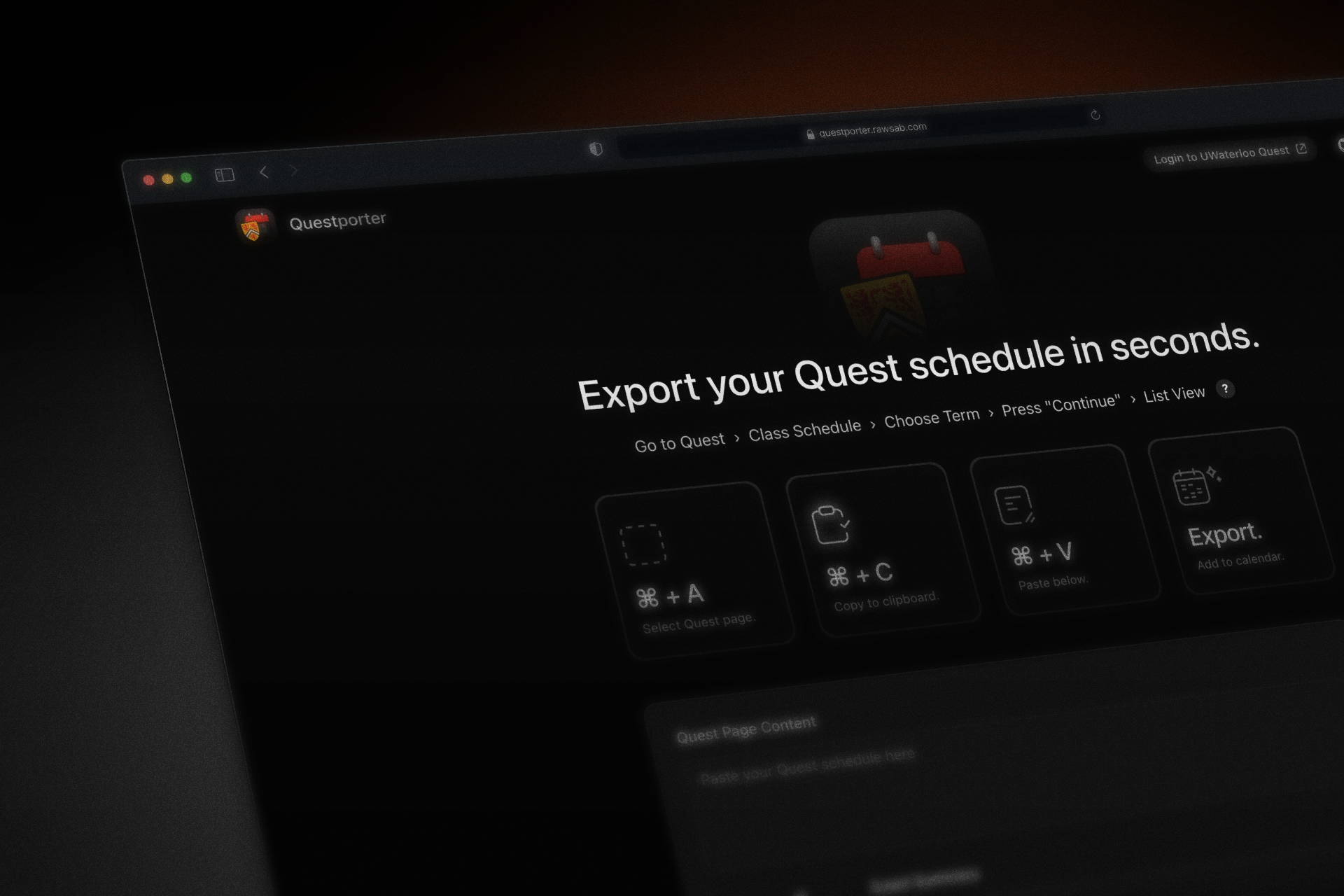Questporter
2025


Timeline
July 2025
Overview
Questporter is a lightweight scheduling utility that exports class schedules from Quest to any calendar app in seconds, using a simple copy-and-paste workflow while ensuring privacy through fully client-side generation.
Technologies
TypeScriptNext.jsTailwind CSSShadcn UIVercel